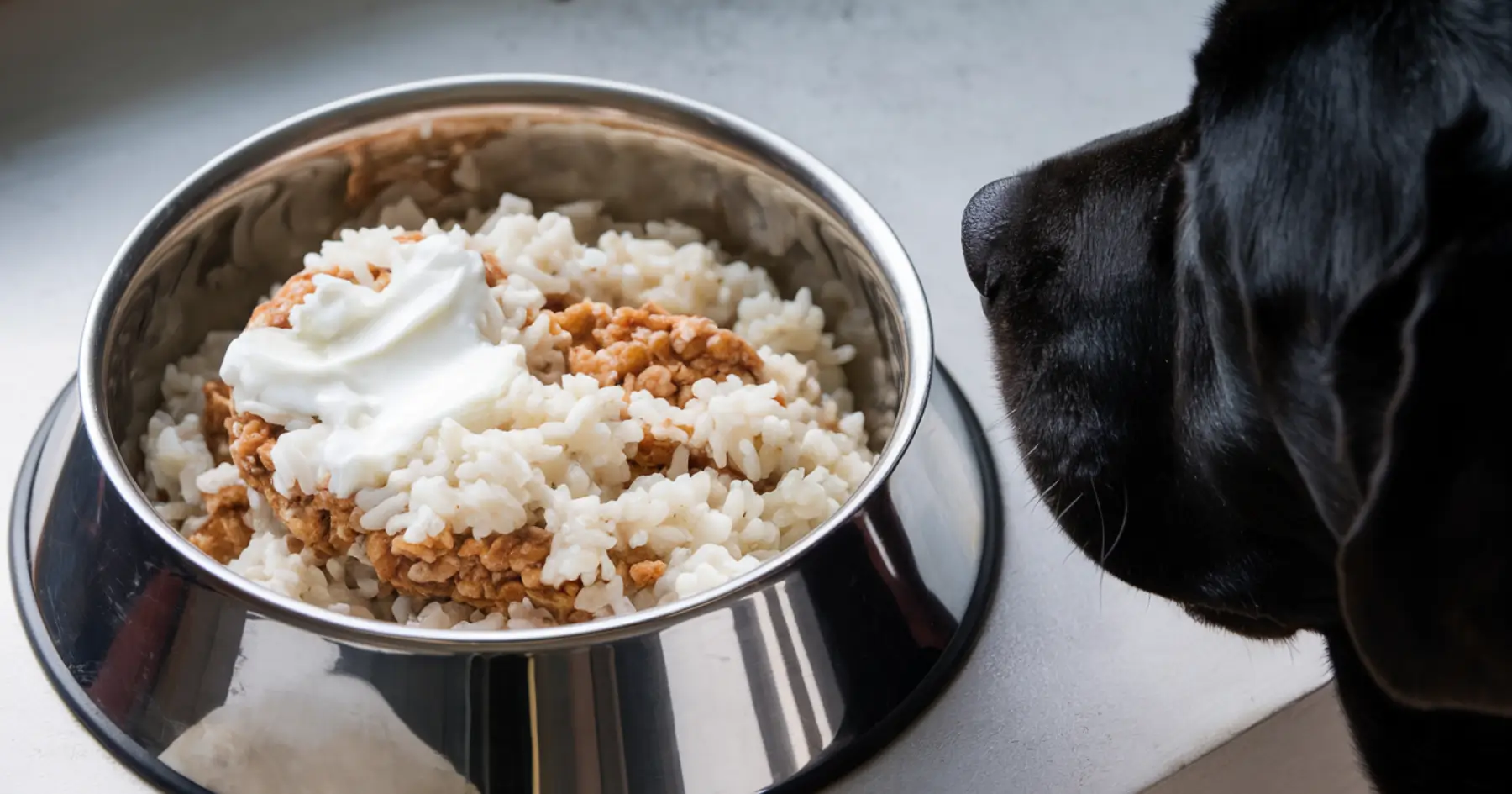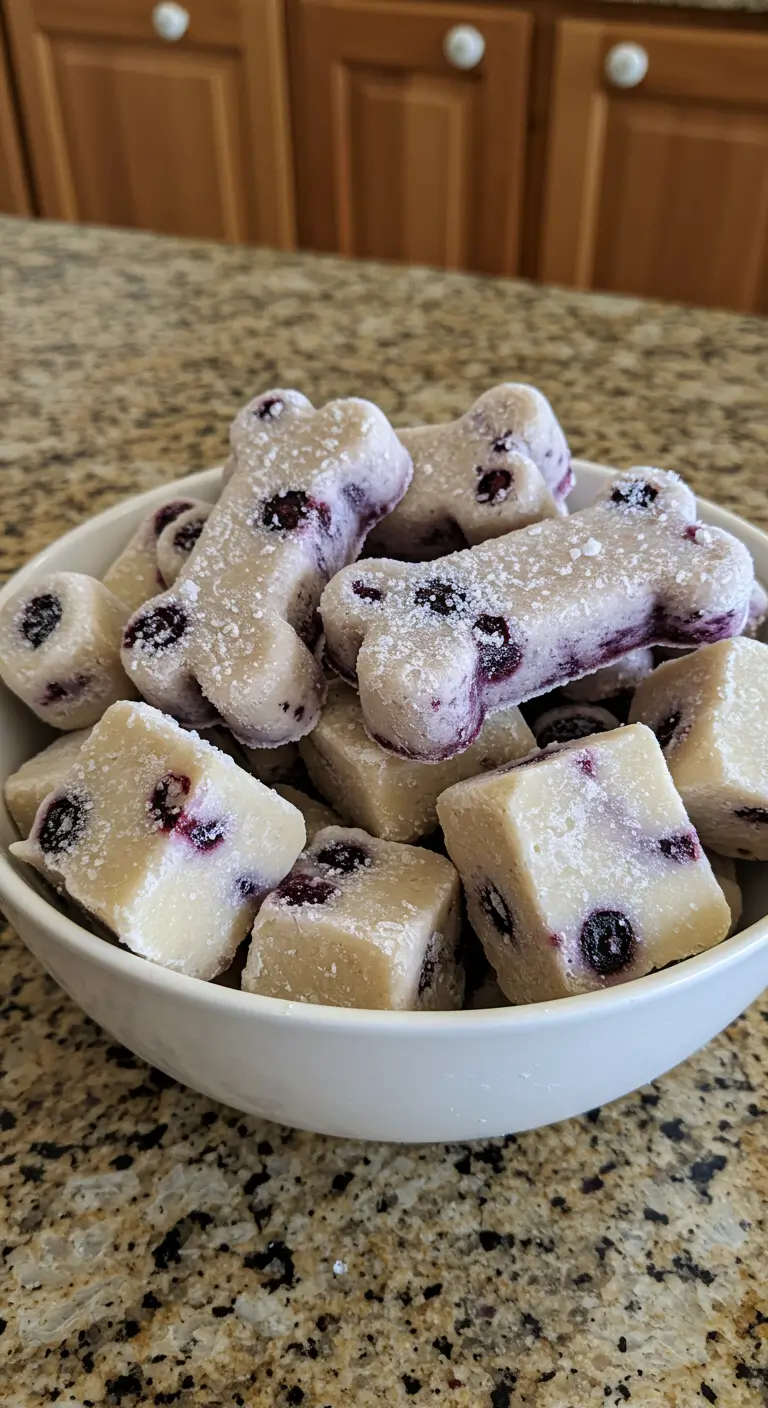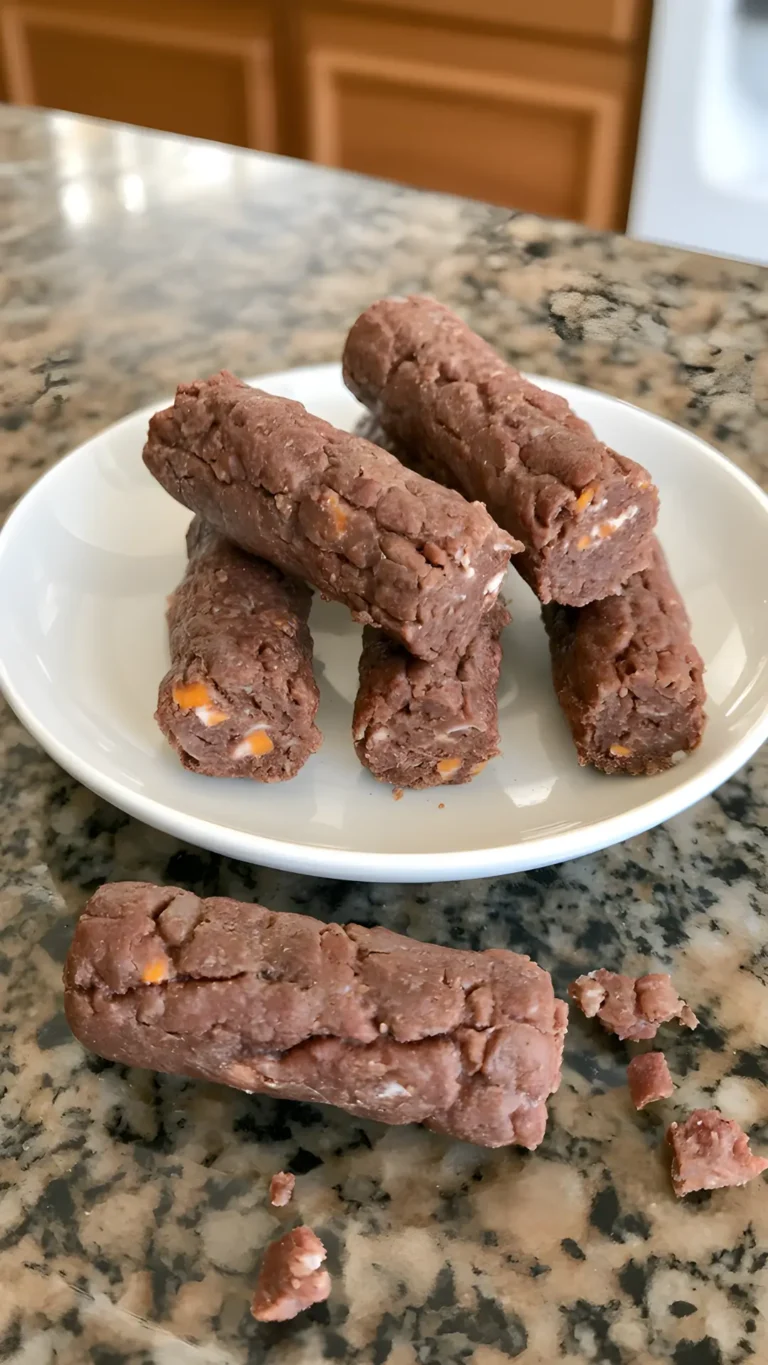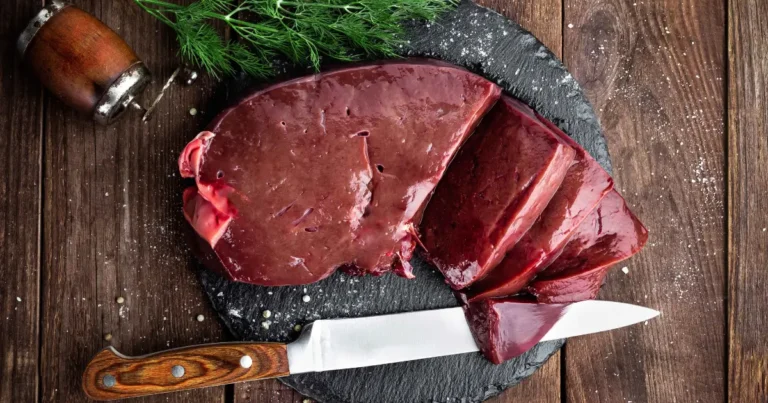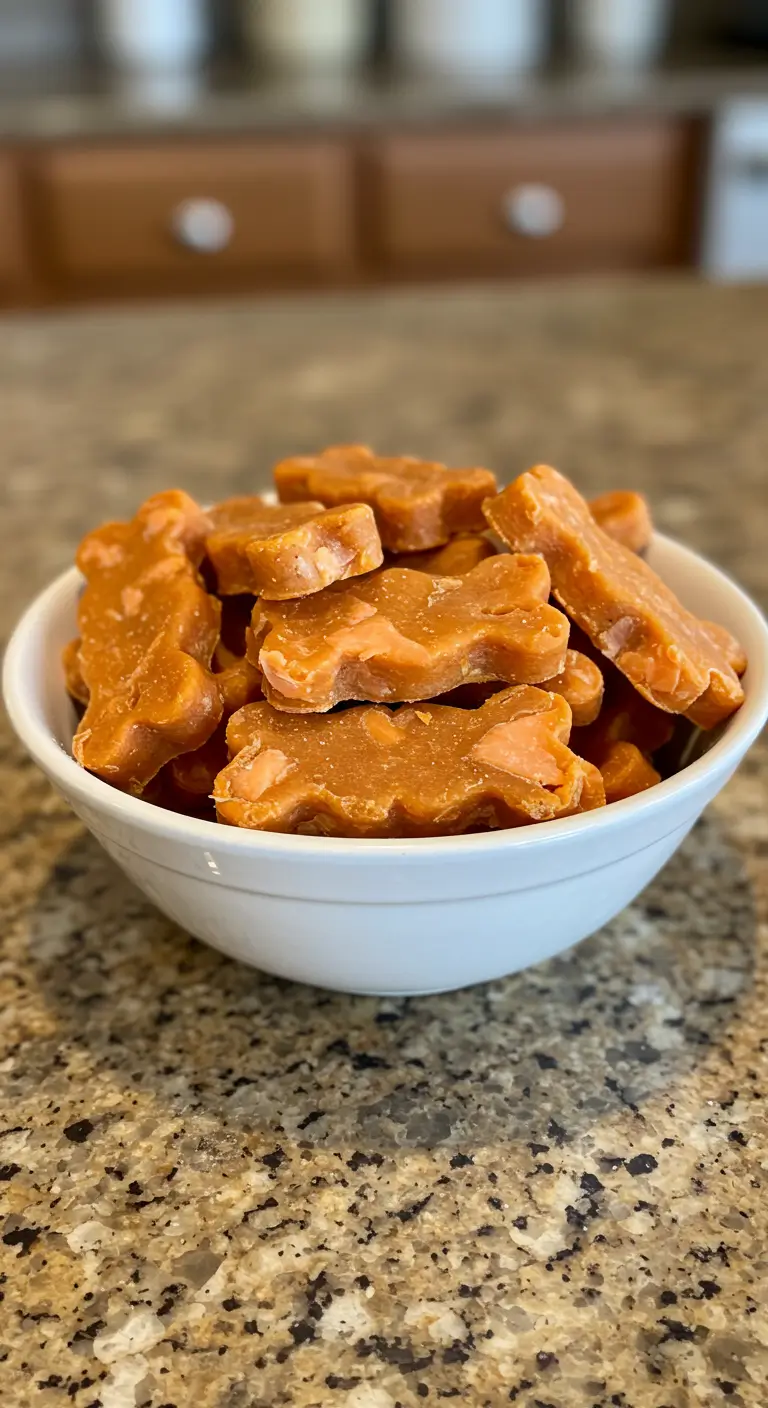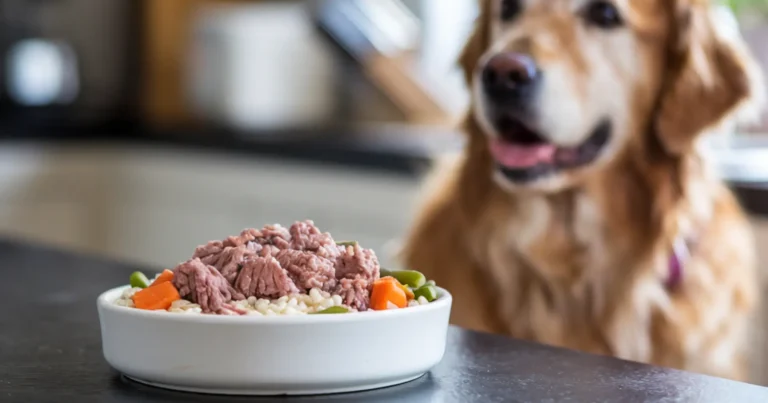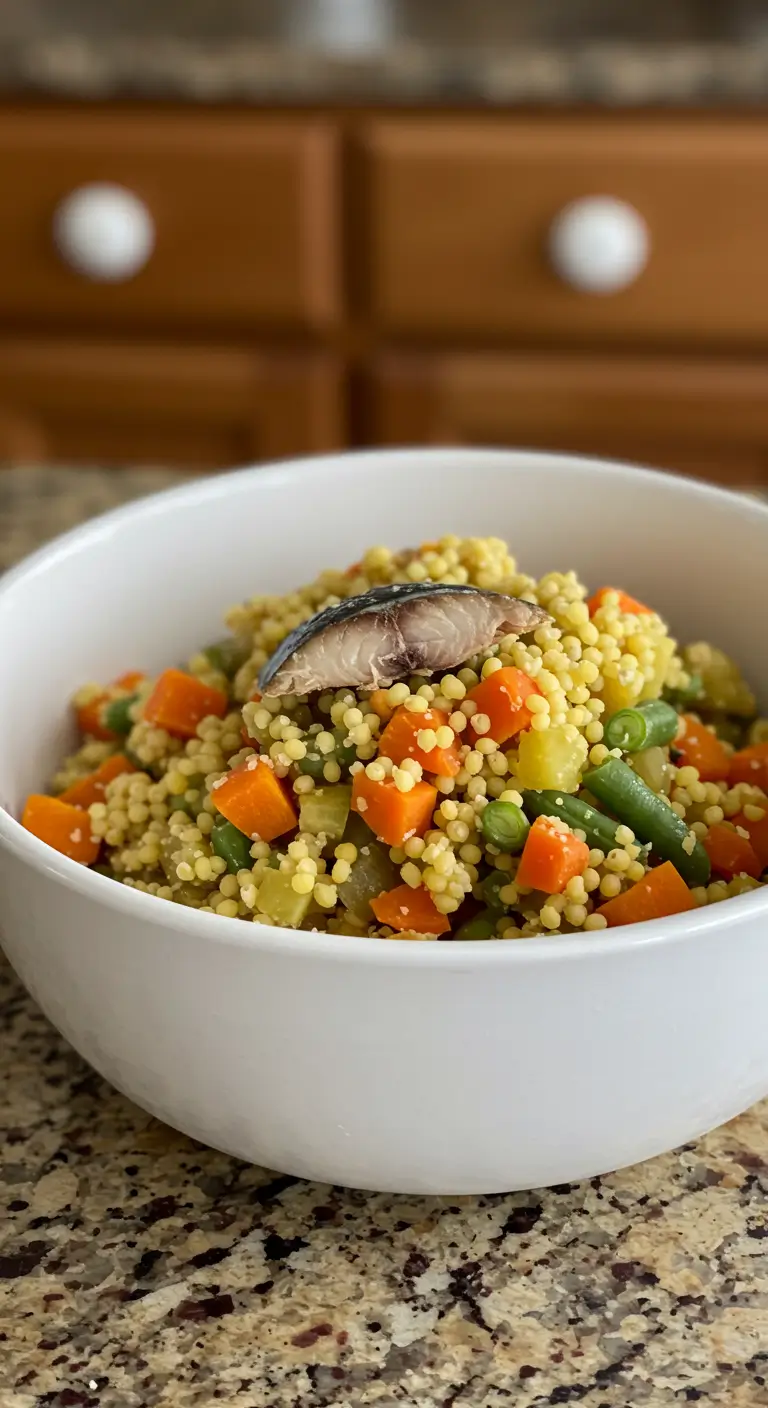Cottage cheese and rice for dogs with pancreatitis: 5 steps
When managing pancreatitis in dogs, finding gentle, low-fat nutrition becomes essential for both recovery and ongoing health. Cottage cheese and rice for dogs offer an excellent therapeutic meal option that’s easy to digest while providing crucial protein and carbohydrates. This simple yet effective combination has long been recommended by veterinarians as part of a healing diet for canines with digestive sensitivities and pancreatic inflammation.
This comprehensive guide will walk you through preparing a veterinarian-approved cottage cheese and rice for dogs with pancreatitis, explain the specific benefits of these ingredients, and provide detailed instructions to ensure your furry friend receives optimal nutrition during their recovery journey.
Table of Contents
Why Cottage Cheese and Rice Benefits Dogs with Pancreatitis
Before preparing this recipe, it’s important to understand why these specific ingredients work so well for dogs suffering from pancreatitis.
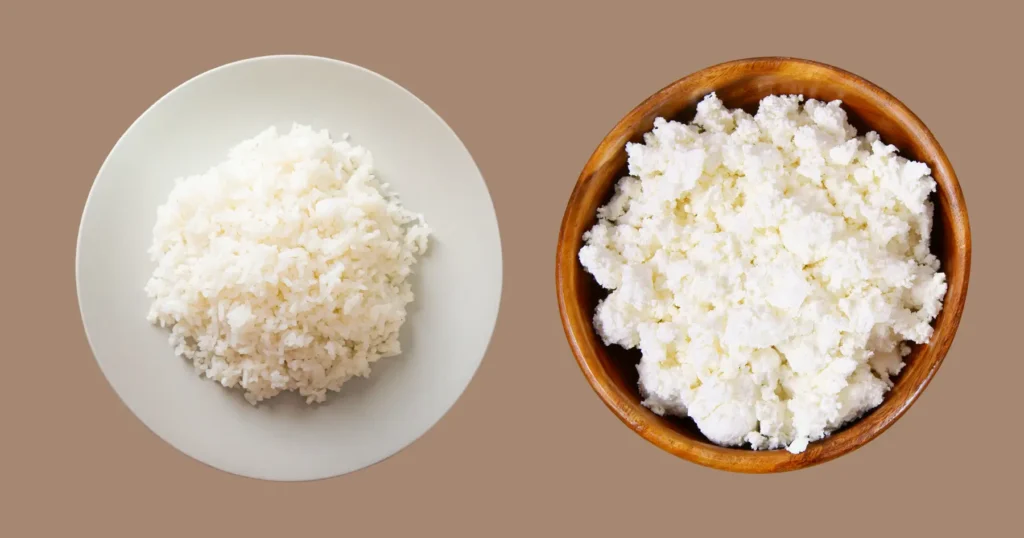
The Gentle Digestive Properties of Rice
Rice serves as an ideal carbohydrate base for dogs with pancreatitis because:
- It’s easily digestible, placing minimal strain on the digestive system
- Contains negligible fat content, crucial for avoiding pancreatic stimulation
- Provides steady, slow-releasing energy without blood sugar spikes
- Naturally soothes the digestive tract with its binding properties
- Creates a consistent stool texture, helpful during recovery
- Serves as a bland base that most dogs tolerate well, even with upset stomachs
White rice is typically preferred over brown rice for acute pancreatitis cases due to its lower fiber content and greater digestibility, though brown rice may be incorporated during long-term management for its added nutritional benefits.
Cottage Cheese as a Gentle Protein Source
Can dogs safely eat cottage cheese? It is a question that many dog owners have. Not only is cottage cheese safe, but it also offers several benefits that make it particularly suitable for pancreatitis management:
- Low-fat content (when using 1% or fat-free varieties) compared to meat proteins
- Easily digestible protein that requires minimal pancreatic enzyme production
- Natural probiotics that support gut health and digestion
- Calcium content for skeletal support during reduced activity periods
- Mild flavor that appeals to most dogs, even with decreased appetites
- Soft texture that requires no additional cooking or preparation
When considering is cottage cheese good for dogs with specific health conditions like pancreatitis, the answer is a qualified yes, provided you select the correct variety and serve it appropriately.
Complete Cottage Cheese and Rice Recipe for Dogs with Pancreatitis
This dog food with cottage cheese has been developed according to veterinary nutritional guidelines specifically for canines with pancreatitis or sensitive digestion.
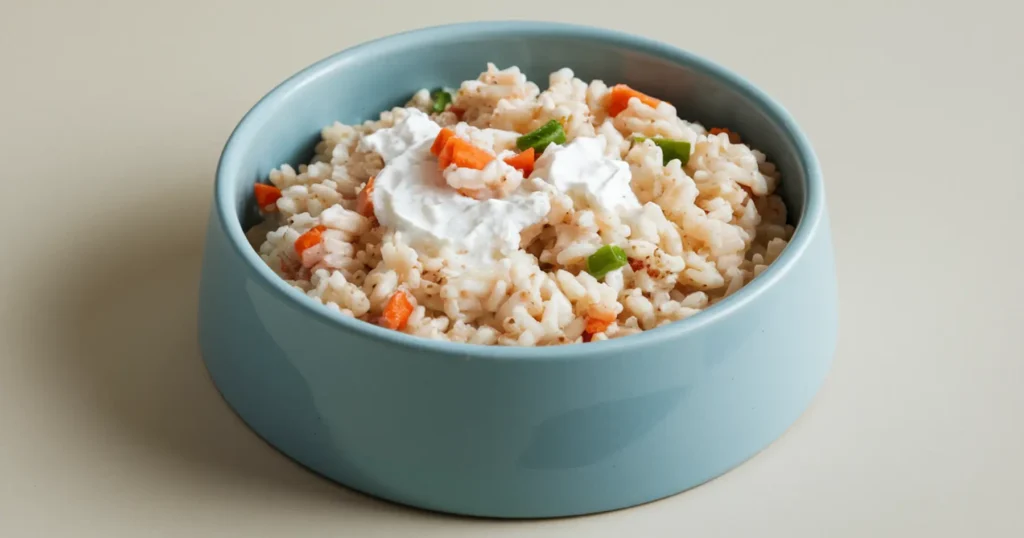
Recipe Quick Facts
- Prep Time: 5 minutes
- Cook Time: 25 minutes
- Total Time: 30 minutes
- Yield: Approximately 4 cups of prepared food
- Serving Size: Varies by dog’s weight (see serving guidelines below)
- Storage: Refrigerate up to 3 days or freeze up to 1 month
- Diet Type: Very low-fat, easily digestible
- Main Ingredients: White rice and low-fat cottage cheese
Ingredients
Base Recipe:
- 2 cups (400g) white rice, uncooked
- 4 cups (950ml) water or low-sodium chicken broth (no onion or garlic)
- 1 cup (225g) low-fat (1%) or fat-free cottage cheese
- ¼ cup (60ml) plain, non-fat yogurt (no sweeteners or additives)
- 2 tablespoons (30ml) olive oil (distributed throughout the entire recipe)
- ¼ teaspoon calcium carbonate supplement
Optional Additions for Long-Term Feeding:
- ½ cup (65g) finely chopped or pureed carrots (well-cooked)
- ¼ cup (30g) finely chopped or pureed green beans (well-cooked)
- 1 tablespoon ground flaxseed (adds omega fatty acids if approved by your vet)
Equipment Needed
- Medium pot with lid
- Measuring cups and spoons
- Large mixing bowl
- Wooden spoon or spatula
- Storage containers with airtight lids
- Optional: food processor or blender if pureeing vegetables
Nutritional Information (Per Cup)
- Calories: 170
- Protein: 10g
- Fat: 3g (16% of calories from fat)
- Carbohydrates: 25g
- Fiber: 0.5g (more if using optional vegetables)
- Calcium to phosphorus ratio: 1.2:1
Special Instructions for Maximum Digestibility
When preparing cottage cheese and rice for dogs with acute or severe pancreatitis:
- For acute cases: Omit optional vegetables initially
- For dogs in early recovery: Use fat-free cottage cheese instead of low-fat
- For dogs with dairy sensitivity: Reduce the cottage cheese amount and increase the rice portion
- For long-term management: Gradually incorporate the optional vegetables and flaxseed
- For complete nutrition: Consult with a veterinary nutritionist about additional supplements needed for extended feeding
5 Steps to Prepare Cottage Cheese and Rice for Dogs with Pancreatitis
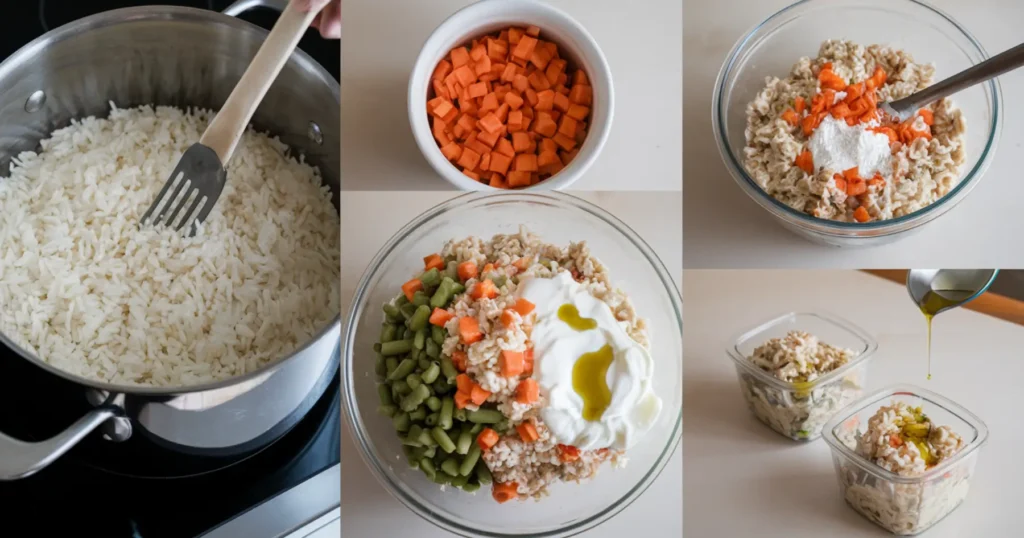
Follow these detailed steps to create this gentle, therapeutic meal for your dog.
Step 1: Cook the Rice Properly
- Use cold water to rinse the white rice until the water runs clear.
- In a medium pot, bring 4 cups of water or low-sodium chicken broth to a boil
- Add the 2 cups of white rice, stir once
- Put a lid on the pot and lower the heat to low.
- Simmer for 18 to 20 minutes, or until the rice is very tender and has soaked up the liquid.
- Remove from heat and let stand, covered, for 5 minutes
- Fluff with a fork and spread on a plate or shallow bowl to cool more quickly
Rice cooking tip: For dogs with pancreatitis, rice should be slightly overcooked rather than al dente, as this makes it more digestible and gentler on the system.
Step 2: Prepare Optional Vegetables (If Included)
- If using vegetables for long-term feeding, steam or boil them until very soft
- For maximum digestibility, puree cooked vegetables in a food processor or blender
- Allow pureed vegetables to cool before mixing with other ingredients
Vegetable tip: For acute pancreatitis, skip vegetables initially. As your dog improves, vegetables can be gradually introduced to provide additional nutrients and fiber.
Step 3: Combine the Main Ingredients
- In a large mixing bowl, place the cooled rice
- Add the low-fat cottage cheese
- Add the plain, non-fat yogurt
- Gently fold these ingredients together until well combined but not mashed
- The mixture should have a creamy, slightly sticky consistency
Mixing tip: Combining ingredients while the rice is still slightly warm (not hot) helps the cottage cheese incorporate more evenly, creating a more appealing texture for dog food with cottage cheese.
Step 4: Add Supplements and Optional Ingredients
- Sprinkle the calcium carbonate supplement evenly over the mixture
- If using and vet-approved, add the ground flaxseed
- If your dog has progressed to the point where vegetables are appropriate, fold in the pureed carrots and green beans
- Drizzle the olive oil evenly across the mixture
- Gently fold all ingredients together until thoroughly combined
Supplement advice: The calcium supplement aids in maintaining the proper ratio of calcium to phosphorus, which is crucial for healthy eating. Before introducing any supplements to your dog’s diet, always get advice from your veterinarian.
Step 5: Portion and Store Properly
- Allow the mixture to cool completely before serving or storing
- Measure appropriate portions based on your dog’s size (see serving guidelines)
- Store portion sizes appropriate for 1-2 days in airtight containers in the refrigerator
- Freeze remaining portions in individual serving containers
- Label containers with the date prepared
- Thaw frozen portions in the refrigerator overnight before serving
Storage tip: Due to the dairy content, cottage cheese and rice for dogs should be stored properly and used within 3 days if refrigerated. Freezing extends shelf life to about a month.
Serving Guidelines for Cottage Cheese and Rice
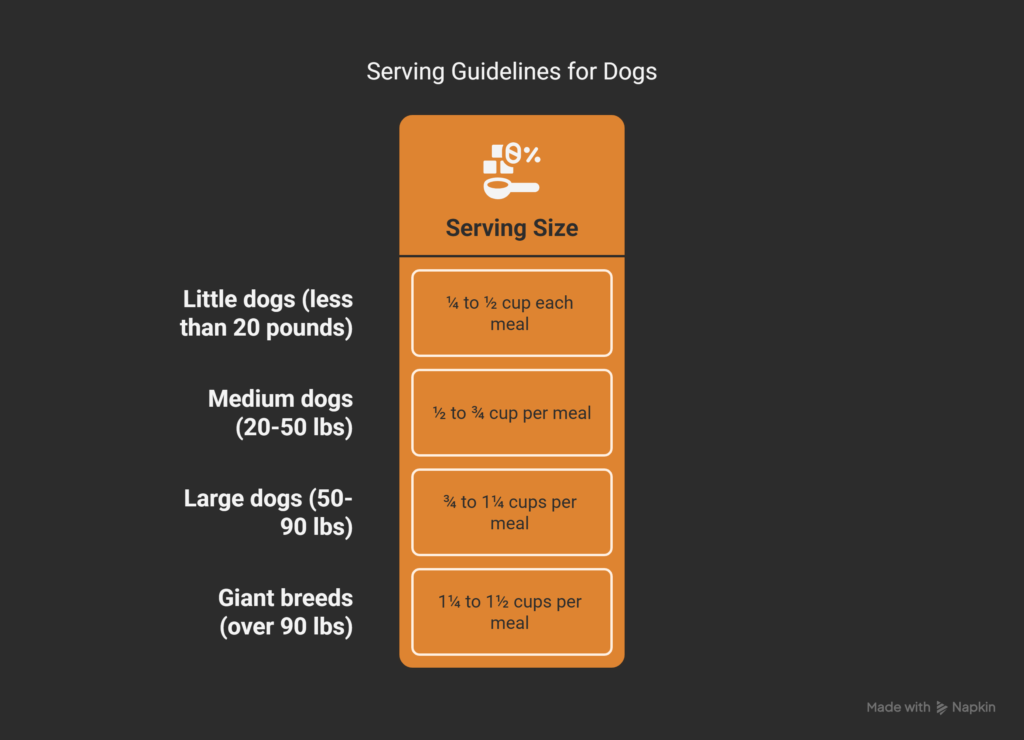
The appropriate serving size depends on your dog’s weight, activity level, and specific health needs. Always consult your veterinarian for personalized feeding recommendations, especially for dogs with pancreatitis.
General Portion Guidelines by Weight
- Little dogs (less than 20 pounds): ¼ to ½ cup each meal
- Medium dogs (20-50 lbs): ½ to ¾ cup per meal
- Large dogs (50-90 lbs): ¾ to 1¼ cups per meal
- Giant breeds (over 90 lbs): 1¼ to 1½ cups per meal
Feeding Schedule Recommendations
For dogs with pancreatitis, smaller, more frequent meals are typically better than large meals:
- Acute pancreatitis recovery: 4-6 small meals throughout the day
- Maintenance phase: 2-3 meals daily, evenly spaced
Monitoring tip: Weigh your dog weekly to ensure they’re maintaining appropriate weight. Adjust portions if you notice unintended weight loss or gain.
Transitioning to Cottage Cheese and Rice Diet
When introducing cottage cheese and rice for dogs with pancreatitis, a careful transition is essential to prevent digestive upset.
If Your Dog Is Currently Fasting (Acute Pancreatitis)
- Follow your veterinarian’s guidelines for reintroducing food after fasting
- Start with 1-2 tablespoons of the mixture
- If well-tolerated, gradually increase the amount over 24-48 hours
- Monitor closely for any signs of discomfort, vomiting, or diarrhea
If Transitioning from Another Diet
- Day 1-2: 75% current diet, 25% cottage cheese and rice mixture
- Day 3-4: 50% current diet, 50% cottage cheese and rice mixture
- Day 5-6: 25% current diet, 75% cottage cheese and rice mixture
- Day 7: 100% cottage cheese and rice mixture
Important: If at any point during the transition your dog shows signs of digestive upset or pain, slow down the process and consult your veterinarian.
Monitoring Your Dog’s Response
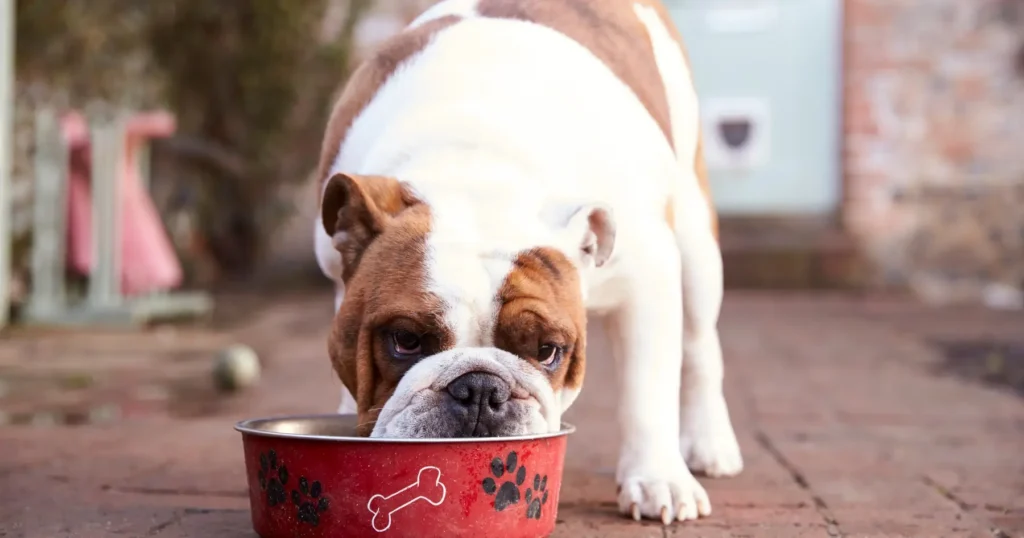
When feeding cottage cheese and rice for dogs with pancreatitis, watch for these positive signs:
Signs of Improvement
- Increased energy: More interest in normal activities
- Better appetite: Eating consistently without hesitation
- Normal bowel movements: Formed stool without diarrhea
- Pain reduction: Less abdominal discomfort or guarding
- Reduced vomiting: Complete resolution of vomiting episodes
Warning Signs
These symptoms require veterinary attention:
- Refusal to eat for more than 24 hours
- Continued or worsening vomiting
- Abdominal pain symptoms include a hunched posture and crying when touched.
- Lethargy or depression
- Yellow tinge to gums or eyes (jaundice)
Why This Recipe Benefits Pancreatitis Recovery
Low fat dog food recipes for pancreatitis, like this cottage cheese and rice combination, work through several healing mechanisms:
Minimal Pancreatic Stimulation
The primary benefit of this recipe is the reduced stimulation of the pancreas:
- Low-fat content (approximately 16% of calories from fat) minimizes pancreatic enzyme demand
- Simple ingredients require less digestive effort
- Easily absorbable nutrients reduce the overall digestive workload
Gentle Protein Source
Is cottage cheese good for dogs with pancreatitis? Yes, because:
- It provides essential amino acids without the higher fat content of most meats
- The protein is already broken down into smaller components, making it easier to digest
- It requires minimal pancreatic enzyme production compared to meat proteins
Stable Blood Sugar Support
This recipe helps maintain stable blood sugar levels through:
- Slow-digesting carbohydrates from rice
- Balanced protein-to-carbohydrate ratio
- Minimal simple sugars that could cause spikes and crashes
Recipe Variations and Alternatives
While this basic cottage cheese and rice for dogs works well for most canines with pancreatitis, these veterinarian-approved variations may help address specific needs:
For Dogs Needing More Flavor
- Add 1-2 tablespoons of plain pumpkin puree (not pie filling)
- Consider our Turkey and Pumpkin Dog Food Recipe for more flavor variety
For Dogs Needing More Protein
- Add one scrambled egg white per cup of the mixture
- Try our Chicken and Rice Recipe for Dogs with Pancreatitis for a poultry-based option
For Dogs with Dairy Sensitivity
- Reduce the cottage cheese amount and increase the rice proportion
- Consider our White Fish and Sweet Potato Recipe, which contains no dairy
For a Complete Vegetarian Option
If your dog cannot tolerate dairy well but you want to avoid meat proteins, try our Vegetarian Dog Food Recipe for Pancreatitis as an alternative.
Always introduce variations gradually and with veterinary approval, keeping the overall fat content extremely low as required for pancreatitis management.
Long-Term Considerations
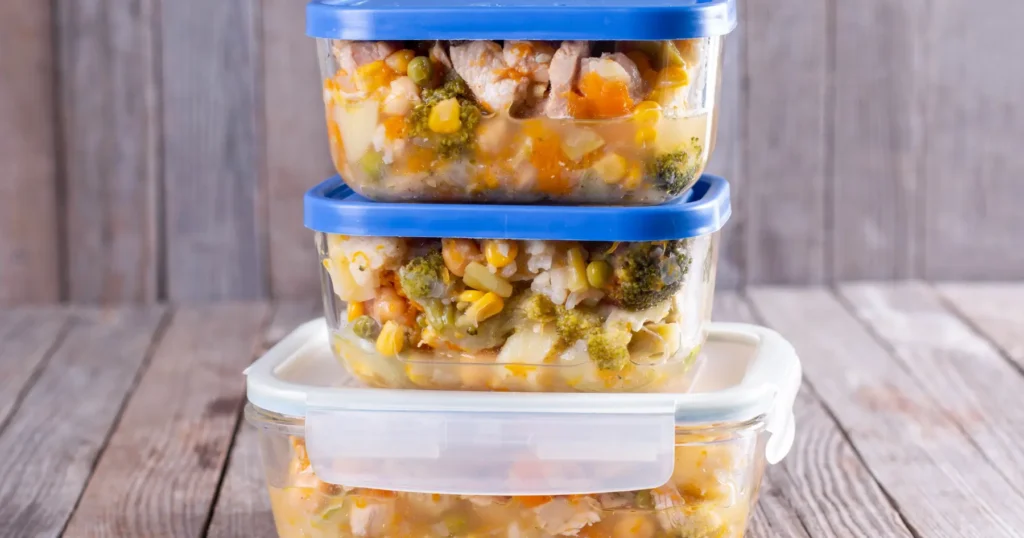
While cottage cheese and rice for dogs provide excellent nutrition during recovery from pancreatitis, long-term considerations include:
Nutritional Completeness
For extended use (beyond 2-3 weeks), this recipe would need supplementation to ensure complete nutrition:
- Multivitamin formulated specifically for dogs
- Essential fatty acids in appropriate amounts
- Additional calcium and phosphorus in proper ratios
- Trace minerals that may be lacking
Rotation with Other Low-Fat Options
For optimal nutrition, veterinarians typically recommend:
- Using this recipe for acute recovery phases
- Rotating between different low-fat recipes once stabilized
- Working with a veterinary nutritionist to develop a long-term feeding plan
Key Takeaways About Cottage Cheese and Rice for Dogs
- Gentle on digestion: This combination minimizes strain on the pancreas and digestive system.
- Low-fat content: Using low-fat cottage cheese keeps fat content well below pancreatitis triggers.
- Simple preparation: The 5-step process is straightforward for any pet parent to follow.
- Transitional diet: Works best as a recovery diet or part of a rotation for long-term management.
- Veterinary supervision: Always work with your vet when managing pancreatitis through diet.
- Monitoring is essential: Watch for signs of improvement or complications.
- This recipe can be adjusted to meet the unique requirements and tastes of your dog.
Conclusion: Supporting Your Dog’s Pancreatic Health
Cottage cheese and rice for dogs with pancreatitis offers a simple yet effective dietary option during recovery and management of this serious condition. By following the five detailed steps outlined in this guide, you’ll provide your dog with a therapeutic, low-fat meal that supports healing while minimizing pancreatic strain.
Remember that while dog food with cottage cheese recipes can be valuable for recovery, they work best as part of a comprehensive treatment plan developed with your veterinarian. With proper care, dietary management, and monitoring, many dogs with pancreatitis can recover well and maintain a good quality of life.
For more comprehensive information about managing canine pancreatitis through diet, visit our main guide on Homemade Dog Food for Pancreatitis, which provides broader information about this condition and nutritional approaches to support healing.
Frequently Asked Questions
Is cottage cheese completely safe for all dogs with pancreatitis?
While cottage cheese is generally safe and well-tolerated by most dogs with pancreatitis, individual sensitivities can vary. To make sure your dog can handle it well, always start with small doses. Some dogs may have lactose intolerance, in which case you should use smaller amounts of cottage cheese or consider a non-dairy protein alternative. For acute pancreatitis, always follow your veterinarian’s guidance on when to introduce cottage cheese and rice for dogs.
How long can I keep feeding my dog this cottage cheese and rice recipe?
This recipe is designed primarily as a recovery diet for short to medium-term use (1-3 weeks). For longer-term feeding, additional nutritional supplementation would be necessary to ensure complete nutrition. Many veterinarians recommend using this recipe during acute recovery phases and then transitioning to a rotation of low-fat recipes or a prescription diet for ongoing management of chronic pancreatitis.
What type of cottage cheese is best for dogs with pancreatitis?
For dogs with pancreatitis, always choose low-fat (1%) or fat-free cottage cheese. Avoid regular or full-fat varieties as they contain too much fat for sensitive pancreatic conditions. Additionally, select plain cottage cheese without added flavorings, fruit, salt, or other additives. When determining if cottage cheese is good for dogs with specific health conditions, the fat content is the most critical factor.
Can puppies eat this cottage cheese and rice recipe?
This recipe is primarily designed for adult dogs recovering from pancreatitis. Puppies have different nutritional requirements for growth and development. If your puppy has been diagnosed with pancreatitis, consult a veterinary nutritionist who can modify this recipe to meet their specific nutritional needs while managing the condition.
How do I know if my dog is lactose intolerant and cannot have cottage cheese?
Signs of lactose intolerance after consuming cottage cheese and rice for dogs include gas, bloating, diarrhea, or stomach discomfort within a few hours of eating. If you notice these symptoms, your dog may have difficulty digesting lactose, the sugar found in dairy products. While cottage cheese contains less lactose than milk, some sensitive dogs may still react to it. In these cases, you might try a lactose-free cottage cheese or consider one of our alternative low-fat dog food recipes for pancreatitis that don’t contain dairy.
References and Resources
For more information on managing canine pancreatitis through diet, consult these valuable resources:
Your Dog Tried It? Drop a Review Below!
There are no reviews yet. Be the first one to write one.

